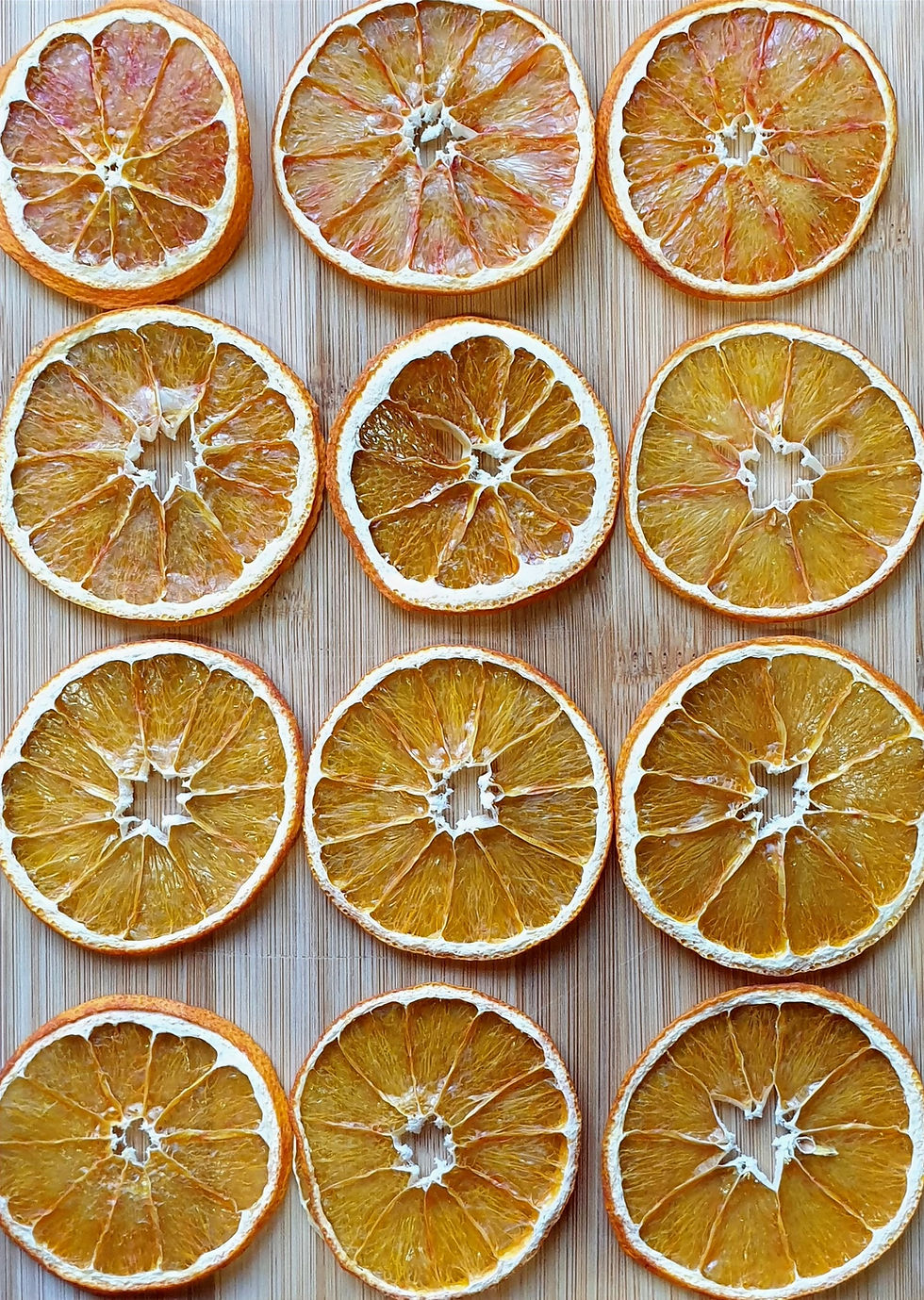Blood Oranges not very "Bloody" this Year?
- Sarah

- Mar 1, 2020
- 2 min read
We love Blood Orange season at Zest HQ. We look forward to this gem like treasure trove of dark, mysterious juiciness with a passion. While the usual oranges are by no means The Only Fruit, when the Bloods come along it gives us a much needed mid-winter boost, indicating that we are gradually returning to brighter, sunnier days.
This year however, it has to be said, we feel a little cheated by our sanguineous friends. Upon cutting they are turning out to be paler than usual, lacking that deep red richness in all but a few streaks spurring out from the vesicles. Don't get me wrong, these are still good quality, organically grown fruit and certified as indeed blood oranges. On doing a little research it appears that blood oranges need an hour or two overnight at sub-zero temperatures, a status which seems to have eluded the Sicilian winter this year, with November overnight temperatures hitting an average low of only 12°C and in December managing only 7°C. Far from the sub-zero required to develop that glorious crimson mystery. How easy would it be to blame Climate Change? Maybe it is a lazy excuse, but it seems logical to me.

The blood orange is a variety of orange (Citrus × sinensis) with crimson, almost blood-coloured flesh. In a harsher winter they become sweet and red, but in a milder winter the fruit remains pale or only subtly blood streaked.
The distinctive dark flesh colour is due to the presence of anthocyanins, a family of polyphenol pigments common to many flowers and fruit, but uncommon in citrus fruits. Chrysanthemin (cyanidin 3-O-glucoside) is the main compound found in red oranges. The flesh develops its characteristic maroon colour when the fruit develops with low temperatures during the night. Sometimes, dark colouring is seen on the exterior of the rind, as well, depending on the variety of blood orange. The skin can be tougher and harder to peel than that of other oranges. Blood oranges have a unique flavour compared to other oranges, being distinctly raspberry-like in addition to the usual citrus notes. The anthocyanin pigments of blood oranges begin accumulating in the vesicles at the edges of the segments, and at the blossom end of the fruit, and continue accumulating in cold storage after harvest.
The blood orange is a natural mutation of the orange, which is itself a hybrid, probably between the pomelo and the tangerine. Within Europe, the arancia rossa di Sicilia (red orange of Sicily) has Protected Geographical Status. In the Valencian Community, it was introduced in the second half of the 19th century.
For blood oranges to blush, they require the night time temperature to drop to -1 or -2°C for at least an hour. This means that over 24 hours there is a swing of nearly 20 degrees between day and night. However during November and December 2019 the recorded low temperatures were well away from this desired state.

Sources:
https://www.timeanddate.com/weather/@2523118/historic?month=12&year=2019
https://en.wikipedia.org/wiki/Blood_orange
https://www.newcoventgardenmarket.com/blog/chef-guide-blood-oranges





Comments